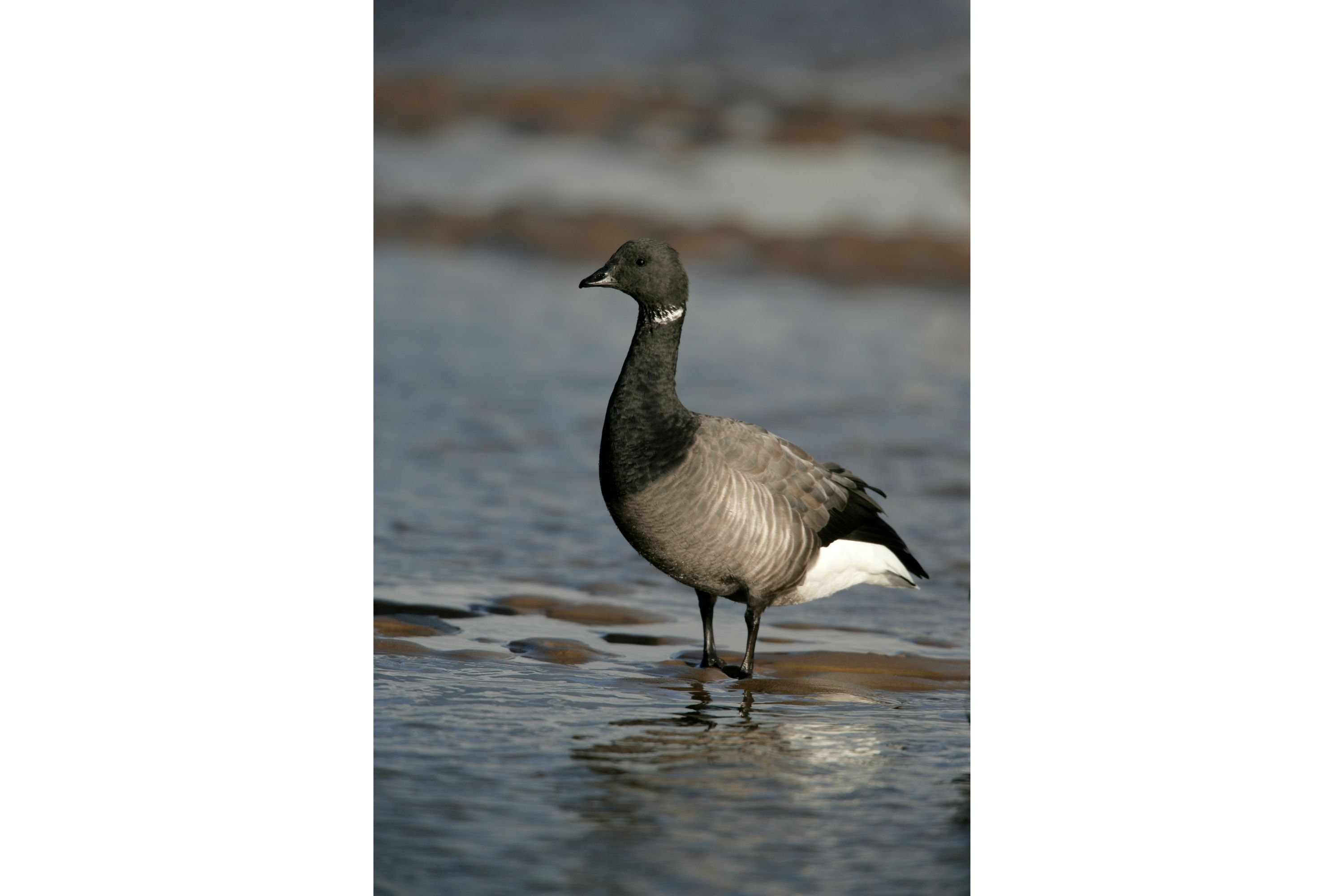Brant
(Branta bernicla)

Description
The brant or brent goose (Branta bernicla) is a small goose of the genus Branta. There are three subspecies, all of which winter along temperate-zone sea-coasts and breed on the high-Arctic tundra. The Brent oilfield, was named after the species. The brant is a small goose with a short, stubby bill. It measures 55–66 cm (22–26 in) long, 106–121 cm (42–48 in) across the wings and weighs 0.88–2.2 kg (1.9–4.9 lb). The under-tail is pure white, and the tail black and very short (the shortest of any goose). The species is divided into three subspecies: -Dark-bellied brant B. b. bernicla (Linnaeus, 1758) -Pale-bellied brant B. b. hrota (Müller, 1776) (also known as light-bellied brent goose in Europe, and Atlantic brant in North America) -Black brant B. b. nigricans (Lawrence, 1846) (sometimes also known as the Pacific brant in North America) The brant goose was strictly coastal bird in winter, rarely leaving tidal estuaries, where it feeds on eelgrass (Zostera marina) and the seaweed, sea lettuce (Ulva). On the east coast of North America, the inclusion of sea lettuce is a recent change to their diet, brought about by a blight on eelgrass in 1931. This resulted in the near-extirpation of the brant. The few that survived changed their diet to include sea lettuce until the eelgrass eventually began to return. Brants have maintained this diet ever since as a survival strategy. A similar collapse in eelgrass in Ireland in the 1930s also negatively impacted the population. In recent decades, it has started using agricultural land a short distance inland, feeding extensively on grass and winter-sown cereals. It has been suggested that they learnt this behaviour by following other species of geese. Food resource pressure may also be important in forcing this change, as the world population increased over 10-fold to 400,000-500,000 by the mid-1980s, possibly reaching the carrying capacity of the estuaries. In the breeding season, it uses low-lying wet coastal tundrafor both breeding and feeding. The nest is bowl-shaped, lined with grass and down, in an elevated location, often near a small pond. The brant goose is one of the species to which the Agreement on the Conservation of African-Eurasian Migratory Waterbirds applies.
Taxonomic tree:







